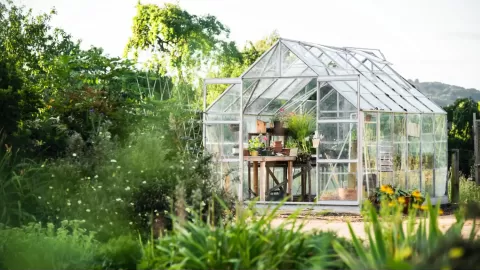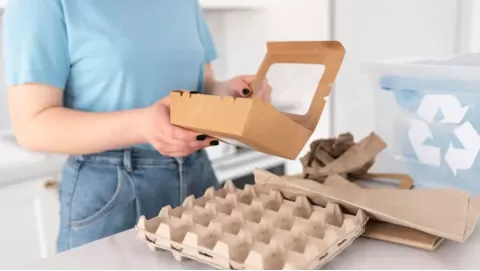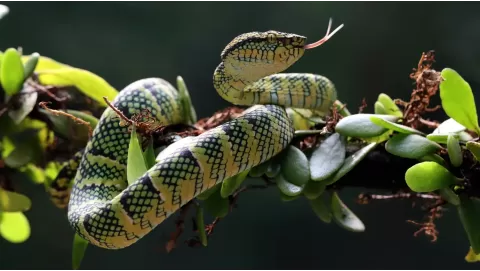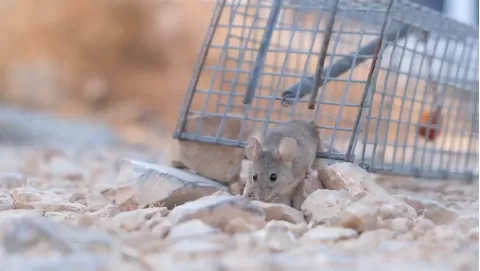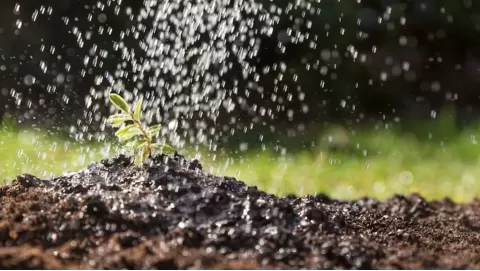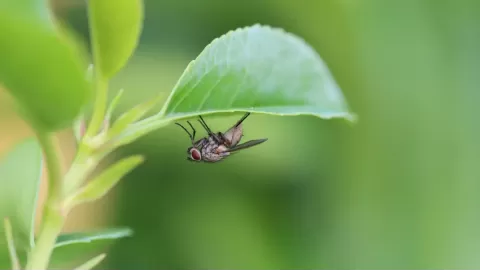
Cactus care 101: How to grow and maintain desert plants
Cactus is a fascinating plant under the Cactaceae family, which has more than 2,000 species. Originally from America and particularly in arid and desert regions, it has adapted to life in some of the most inhospitable areas on Earth. This makes it special as it can survive on very little water and lots of sunshine, as compared to all of the other plants.
The main ingredient of Cactus is its succulence. However, Cactus does have fat, fleshy stems that store water. This allows these plants to store water for long periods, which helps them survive long dry periods. These stems are usually ribbed or segmented, which enables the Cactus to expand or contract based on how much water they have taken in.
Cactus has developed ways to minimize water loss. Most species do not have leaves or have very small leaflets. Instead of true leaves, however, it has spines that do multiple jobs, including defending themselves against herbivores and providing shade by reducing the amount of air moving across the marine animal surface, thus limiting transpiration losses.
Cactus is a hardy type of vegetation that also builds colourful, gorgeous blooms. Though flowers can be short-lived, they are often brilliant and vivid. Additionally, certain species of Cactus bear fruits that play a vital role in desert environments, where they serve as food for a number of animals.
Everyone loves cactus plants and gardens as they remind us of desert landscapes and everything about the desert surroundings. Growing and caring for these plants require tools and supplies. Growcycle sells a number of products, from specialized cactus soil to pots, so that these desert plants can flourish in any environment.
Essential Care Tips to Thrive Cactus
Here are some basic care tips to help keep a Cactus healthy and thriving. If you follow these simple precautions, it will at least make it easier to keep a cactus nice and thriving.
- Light
Cactus is a sun-loving desert plant. They are not fond of low light or subtle lighting, so this room should have a lot of natural light to keep them strong and healthy. To maximize exposure to daylight indoors, Cactus positions them towards south—or west-facing windows where they can drink the sun for a good part of the day.
If there's no such window, an eastward one will fulfill the needs of the Cactus just fine. This kind of spot gets a bit of low-level direct morning sun, which is less concentrated, but it isn’t without value. Weaken, elongate, or whiten the Cactus due to insufficient sunlight; avoid breathing in areas where no or minimal lighting is available.
Most Cactus varieties require a minimum of six hours of direct, bright light each day. Providing ample sunlight will keep the plant healthy and looking good.
- Watering
The cactus is a type of plant that is known to be tolerant of dryness and does not need to be watered frequently. Following the “soak and dry” rule of watering your plant, as this is the right amount of water without overwatering, which leads to the death of the plant. Before watering, they should be allowed to dry out completely, then thoroughly soaked. Thus, moisture does not gather in this plant, preventing root rot, which can result from its abundance.
It may require frequent watering while growing in summer and spring. As an example, when it’s kept in a small pot, say about 3 inches or less in diameter, you might need to water frequently, about once a week, for instance, because small pots tend to dry up quickly. However, if you have a big cactus plant in the pot, then watering it every 2 or 3 weeks will suffice. When entering its dormancy period of the winter months, the Cactus requires significantly reduced watering, as it doesn't require nearly as much water as it did, but adjustments must be made as the seasons change.
A moisture meter can help prevent you from overwatering. This piece of equipment enables gardeners to assess the moisture level of the soil and ensures that they only water their cactus when it’s genuinely dry.
- Humidity
Cactus desert plants can grow in low-humidity environments. So, to maintain Cactus in a good state of health, it is important that the air around them be dry. Excessive humidity can cause issues like the growth of fungi or oversaturated soil, which can cause root rot.
Thus, it would not be suitable to position the Cactus in rooms such as the bathroom and kitchen due to the fact that these areas are generally much damper than other rooms. They tend to trap moisture in them, which is not appropriate for cactus plants. Avoid these rooms; instead, opt for those rooms which are well-ventilated and somewhat less humid, which mimics a desert condition in which cacti can survive effortlessly. This plant thrives when kept on the dry side, helping to prevent all the common problems and encouraging healthy growth.
- Temperature
Cactus are warm-weather plants– they enjoy a temperature range of 60 to 80 degrees Fahrenheit (16-27°C). Just like the desert environments in which they naturally grow, these factors are similar. Therefore, the plants need this sort of warmth inside.
The plant tolerates lower temperatures over winter, but not cold draughts and sudden changes in temperature. The sudden temperature drop could shock the plant and potentially cause damage. Some succulents love dry air, but in the winter months, for example, putting a Cactus next to a drafty window or air conditioner vent would only subject the plant to cold air, which it does not like!
This plant thrives at a consistent temperature. In the event that the house's temperatures vary, the cactus must be shielded from any sources of chilly wind or heat spikes so as to have stable conditions.
- Soil
Because of this need for specialized soil conditions, well draining soil is the most essential element in cactus gardening. These plants are prone to root rot, when they retain too much moisture, so using the right soil is crucial. The best formula for potting Cactus is a basic Cactus potting soil that lets go of water easily and has low moisture content.
The Cactus mix has lower nutrients than regular potting soil or garden soil and doesnt hold water around roots. Common potting soils retain more moisture and nutrients than this plant needs, leading to too much watering troubles and rotting roots.
The medium used for Cactus should not be a generic medium for all succulents. This will allow the Cactus to be healthy without soggy roots, causing mold to grow.
- Fertilizer
The only fertilizer that can be used to fertilize Cactus or succulents is the fertilizer prepared only for them. Such fertilizers are low in nitrogen but high in phosphorus and potassium, right up through healthy growth to avoid overloading the plant.
It is fascinating to note that you need to water the Cactus prior to the fertilizer application. This way, the roots won't burn; spreading manure on dry ground is risky. Once the soil is dampened, the diluted fertilizer can then be applied according to the directions on its label.
This plant does not need heavy feeding, so fertilizing once in the spring and again in the summer is enough. No need to over-fertilize, and indeed it can be harmful, because these desert plants are not heavy feeders.
Techniques To Grow Cactus Fast
Let us discuss some good practices and tricks on how to make Cactus grow faster. These practices will help keep the plant healthy and flourishing.
Pruning
Pruning is rarely necessary with cactus, because their growth is slow and gradual, evolving over months of time. Pruning only needs to be done when removing any damaged/infected parts of the cactus. It is also advisable to wear thick gloves and use sharp, sterilized cutting tools to avoid injuries and infections from some diseases while pruning.
Propagation
If you see offshoots or pups on a cactus, then it can be propagated. Propagating a Cactus, on the other hand, is not a simple undertaking but very rewarding. By removing these offshoots or pups, the resources of the mother plant are relieved, meaning that less of its water and nutrients are competed for.
It’s best to propagate in spring, so that new cuttings have a greater chance to take root. For this, one would need a good pair of thick gloves, sterilized cutting tools, Cactus potting mix, and small pots. It may increase the success rate by using the rooting hormone, but it isn’t necessary.
- Growers start propagation by making clean cuts just below each pup or offshoot from the parent plant to avoid spreading infection into them.
- To prevent rotting, allow them to dry out until they harden or callus over for about one week in a bright, dry location.
- It should be planted in small pots using soilless potting medium designed for succulents like Cactus.
- If a rooting hormone is used, dip the end of each cutting into the hormone and then insert it into the moist but not wet soil.
- Mist the soil regularly, enough to keep it slightly moist.
- In around six weeks, the roots should be established, at which point cuttings may be transferred into larger pots to support new growth.
Repotting
Repotting is an essential part of cactus plant care, as it serves to replenish the plant once the roots have outgrown the container. This process can be somewhat challenging, but it will guarantee that these plants thrive and grow properly. It should be repotted every 2 to 4 years on average, although the time can sometimes be lengthened by feeding in the growth season.
- Cactus plants have sharp spines, so it is recommended to wrap the cactus in newspaper or cardboard to prevent accidental pricks.
- If you aren't sure what to put cactus plants in, terracotta pots are great for cactus plants because they contribute to airflow around the roots and absorb excess water so only the necessary amount of water remains and prevents root rot from happening.
- Check the root system prior to repotting; remove any dead or damaged roots. Letting the plant’s roots dry out for two or three days before transferring it to its new pot makes it easier to spot unhealthy roots and remove them, to minimize the risk of infection.
- Cactus replanting in spring is the ideal season, as they will start doing new things when the temperatures start rising and the hours of daylight become longer.
- First, one-third of a bag of Cactus potting mix is added to the new pot. Gently place the root ball in the center of the pot.
- Add more soil around this root ball while pressing it gently until the Cactus is firmly held by soil compression.
- After transplanting, it is best to wait a few days before watering deeply into the pots containing the repotted Cactus. Since repotted plants are often still adjusting to their new homes, avoid watering for at least a week after repotting.
- Keep an eye on the Cactus in the week or two of adjusting to its new environment, but when it has adjusted, get back into the normal watering and feeding routine.
Common Types of Cactus
They come in various shapes, and some species differ from others. Here are a few notable types:
- Barrel Cactus
The Barrel Cactus, a member of the ferocactus genus, is known for its distinctive round shape. It is named so because of its thorny barrel-like stem, which is covered in hard, dense prickles. The remarkable flowers of the barrel Cactus are usually observed when they mature.
- Blue Candle Cactus
Blue Candle Cactus is an eye-catching species found in Mexico.Its bright blue-white stems are standard for candle flame. Its branches grow freely outwards, like a candelabrum, so it is unique and very good-looking.
Branchy structure and a striking coloration make this cactus a popular choice. Blue Candle Cactus thrives in bright and direct sunlight and has very low water needs, meaning it has characteristics similar to most of the other common varieties of succulent plants that flourish in arid climates.
- Mammillaria Cactus
Mexico’s Mammillaria Cactus is a lovely variety from the central parts of the country. Stalks are attractive, dark green, spiked with bronze-orange hues. This drought-resistant variety produces many offsets or side shoots that can be easily separated to produce new plants.
Benefits of Cactus Plants
Then, cactus and succulents aren't just visually striking houseplants but also have lots of practical advantages that can be very helpful at home. This is what a Cactus can bring to the beneficiary of its living space:
- Air Purification
Cactus also converts carbon dioxide into oxygen just like all the mother plants, so it also contributes to the purification of indoor air. They can also absorb pollutants from the air and thus help cleanse it. To keep the air in the house completely clean, one Cactus should be kept for ten individuals in the house.
- Stress and Anxiety Reduction
Cactus helps in reducing stress and anxiety by reducing carbon dioxide at home, which causes irritability. It is an important part of the home (or a workspace) for people who struggle with stress, due to its soothing effects. It has a calming effect and can help people recover faster.
- Noise Reduction
Indoor Cactus plants are also sound-reducing, highly useful in filtering noise. Their surface area absorbs noise, which is particularly handy if placed near windows, doorways, or work areas. And, in doing so, they foster more peaceful, quieter settings.
- Healing Properties
Cactus also has a range of potential health benefits. It is known for its antiviral properties and can provide safety for neurons. It also has antioxidant properties, helps regulate blood sugar levels, treats prostatic hypertrophy, and reduceses cholesterol levels. It also adds indoor humidity, helping with dry skin and itching problems.
Common Issues and Solutions
Now let’s see some of the common problems that can come with Cactus. Identifying these issues will better set you up for controlling them effectively to keep your cactus healthy:
- Pests
Though Cactus and succulents are generally easy to care for plants, they can sometimes suffer from pest problems. Root mealies and mealybugs are the most common insects that can attack. These little bugs can make all sorts of trouble if the cactus is not healthy.
Do not keep this plant in a humid spot — they need plenty of sunlight and air to prevent pest infestations. Use fast-draining soil to help avoid excess moisture, which provides a breeding ground for pests.
- Cochineal Scale Bugs
Cactus scale bugs are especially alarming for Cactus but primarily the Opuntia type like Angel Wing or Rufida Minima Cinnamon Cactus. They suck sap out of leaves that can weaken or kill the plant.
For treating cochineal scale, you start by spraying the infected areas with water to expose and soften the insects. And you should spray the Cactus with insecticidal soap, or mix 2.5 milliliters of dish soap in a gallon of water. If the infestation is widespread, consider pruning and discarding badly infected pads to help reduce transmission.
- Severe Infestations
For serious infestations, a combination of insecticides, dormant oil sprays, and insecticidal soaps may be needed. Good control can be achieved with Malathion, triazide, or a combination of Neem oil or Volck dormant oil spray. These treatments, however, must not be used on hot, sunny days, since the dormant oil can burn the cactus. Use a pesticide with dish soap if the weather is too hot.
FAQ’s
What is the lifespan of an indoor Cactus?
The indoor Cactus plant life varies widely depending on its kind and the way it is cultivated. With proper watering, sunshine, and soil, most people can keep an indoor Cactus fresh for 10 years. But some last just months, while their brethren living in the wild outdoors can live a whole three centuries.
How can growers revive a dying Cactus?
The only way to save a lovesick Cactus is by extending to rotten or injured parts. This involves dosing its light uptake and moisture consumption appropriately. Additionally, applying low-nitrogen fertilizer to the Cactus would help it recover.
Can the Cactus plant be grown indoors?
Yes, cactus plants can be grown indoors. They do well in indoor spaces as their requirements for dry conditions and low maintenance make them ideal plants.
The Bottom Line
It can be quite a rewarding experience to take care of a Cactus plant. It provides a bit of nature and an easy-care plant anywhere. Knowing the exact requirements, like light, watering, humidity, and soil type, along with other challenges like treatment adjustment, is crucial to help maintain the Cactus's health.
Use the well-draining soil and quality pots that you need — Growcycle has it all. With proper care, these Cactus plants can be great indoor plants to have in any home, thus adding a little bit of desert beauty to everyday living.
Disclaimer: This material is for informational purposes only and should not be relied on for legal, medical, financial, or any other form of professional advice.



